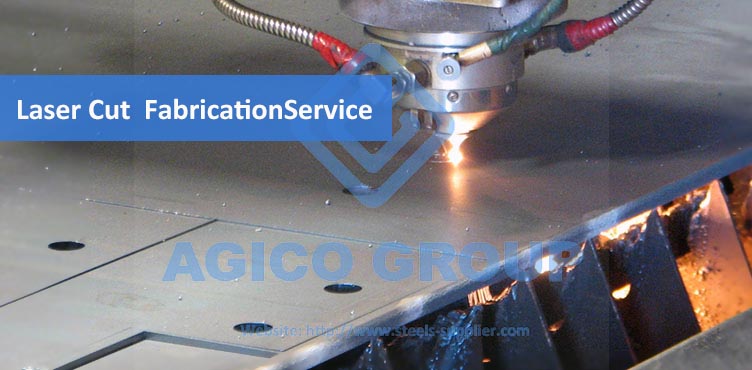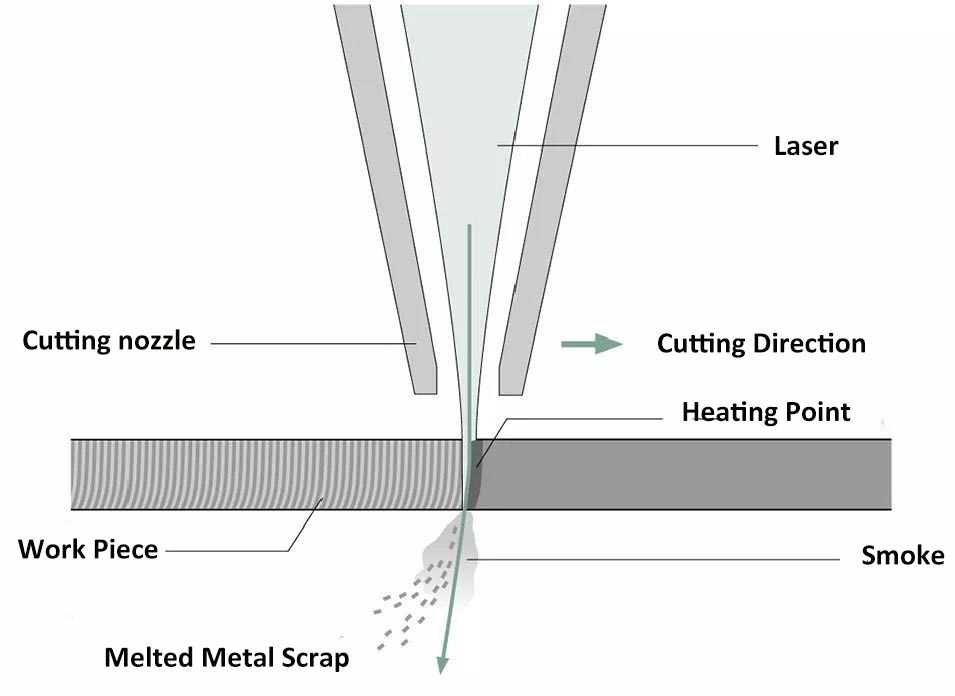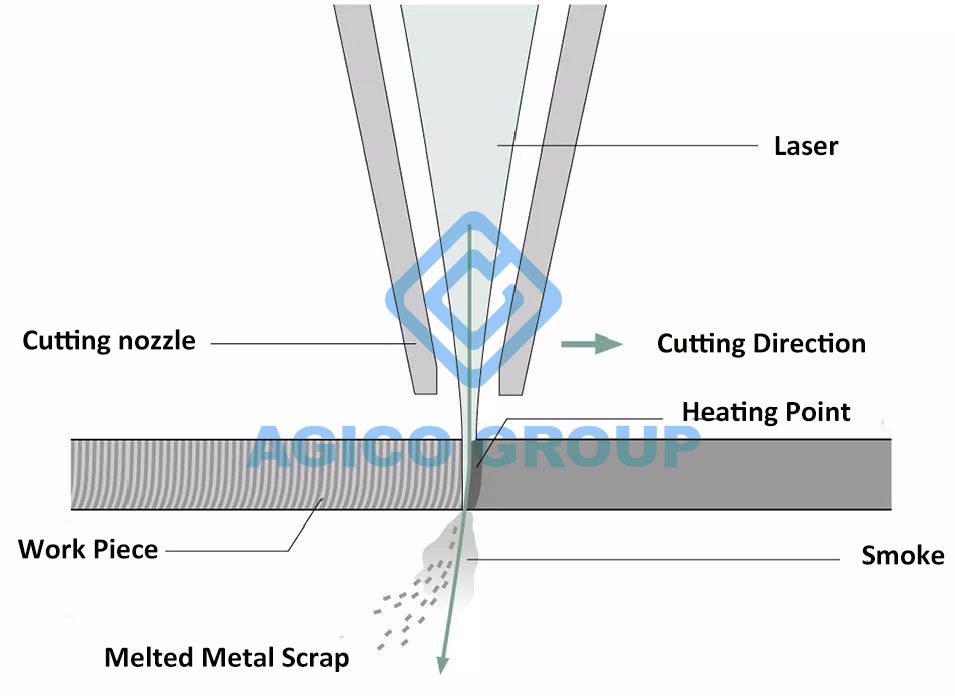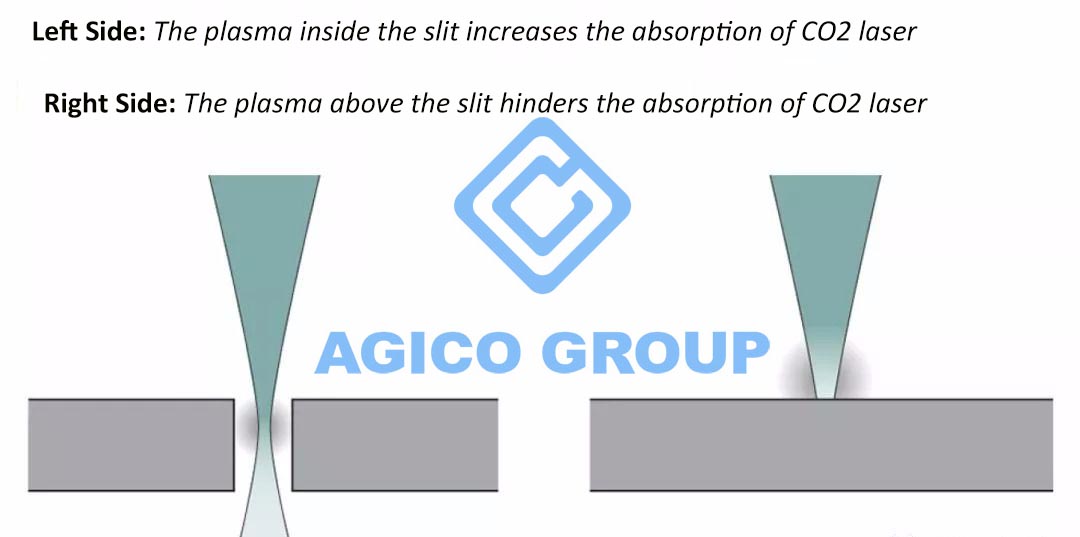
Laser Cutting Basics
When focused laser beam is directed onto the steel plate, the illuminated area will heat up sharply to melt or vaporize the material. Once laser beam penetrates the steel plate, the cutting process begins: the laser beam moves along the contour while melting the material. A jet of air is typically used to blow the melt away from the slit, leaving a narrow gap between the cut portion and the plate, slit having almost the same width as the focused laser beam.
Flame Cutting

Flame cutting is a standard process used to cut mild steel, using oxygen as the cutting gas. Oxygen is pressurized up to 6 bar and blown into the incision. Heated metal reacts with oxygen: combustion and oxidation takes place. The chemical reaction releases a large amount of energy (up to five times the laser energy) to assist the laser beam in cutting.
Melt Cutting
Melt cutting is another standard process used when cutting steel plates. It can also be used to cut other fusible materials, such as ceramics. Nitrogen or argon is used as the cutting gas, and a gas of 2-20 bar is blown through the slit. Argon and nitrogen are inert gases, which means they do not react with the molten metal in the slit, just blowing them to the bottom. At the same time, the inert gas protects the cutting edge from oxidation by air.
Compressed Air Cutting

Compressed air can also be used to cut sheets. Pressurizing the air to 5-6 bar is sufficient to blow away the molten metal in the slit. Since nearly 80% of the air is nitrogen, compressed air cutting is essentially a melt cut.
Plasma Assisted Cutting

If the parameters are chosen properly, a plasma cloud will appear in the plasma-assisted melting cut. The plasma cloud consists of ionized metal vapor and ionized cutting gas. How does it works? The plasma cloud absorbs the energy of the CO2 laser and converts it into the steel plate, allowing more energy to be coupled to the workpiece, and the material melts faster, making the cutting faster. Therefore, this cutting process is also called high-speed plasma cutting.
The plasma cloud is in fact transparent to the solid laser, so plasma-assisted melt cutting can only use CO2 lasers.
Gasification Cutting
Gasification cutting evaporates the material, minimizing the effects of thermal effects on the surrounding material. These effects can be achieved by continuous CO2 laser processing of low-calorie, high-absorption materials such as thin plastic films and infusible materials such as wood, paper, and foam.
Ultrashort pulse lasers allow this technology to be applied to other materials like steel. The free electrons in the steel plate absorb the laser and heat up sharply. The laser pulse does not react with the molten particles and plasma, steel directly sublimes, and there is no time to transfer the energy to the surrounding material in the form of heat. The picosecond pulse ablate the material without significant thermal effects, without melting and burrs.


